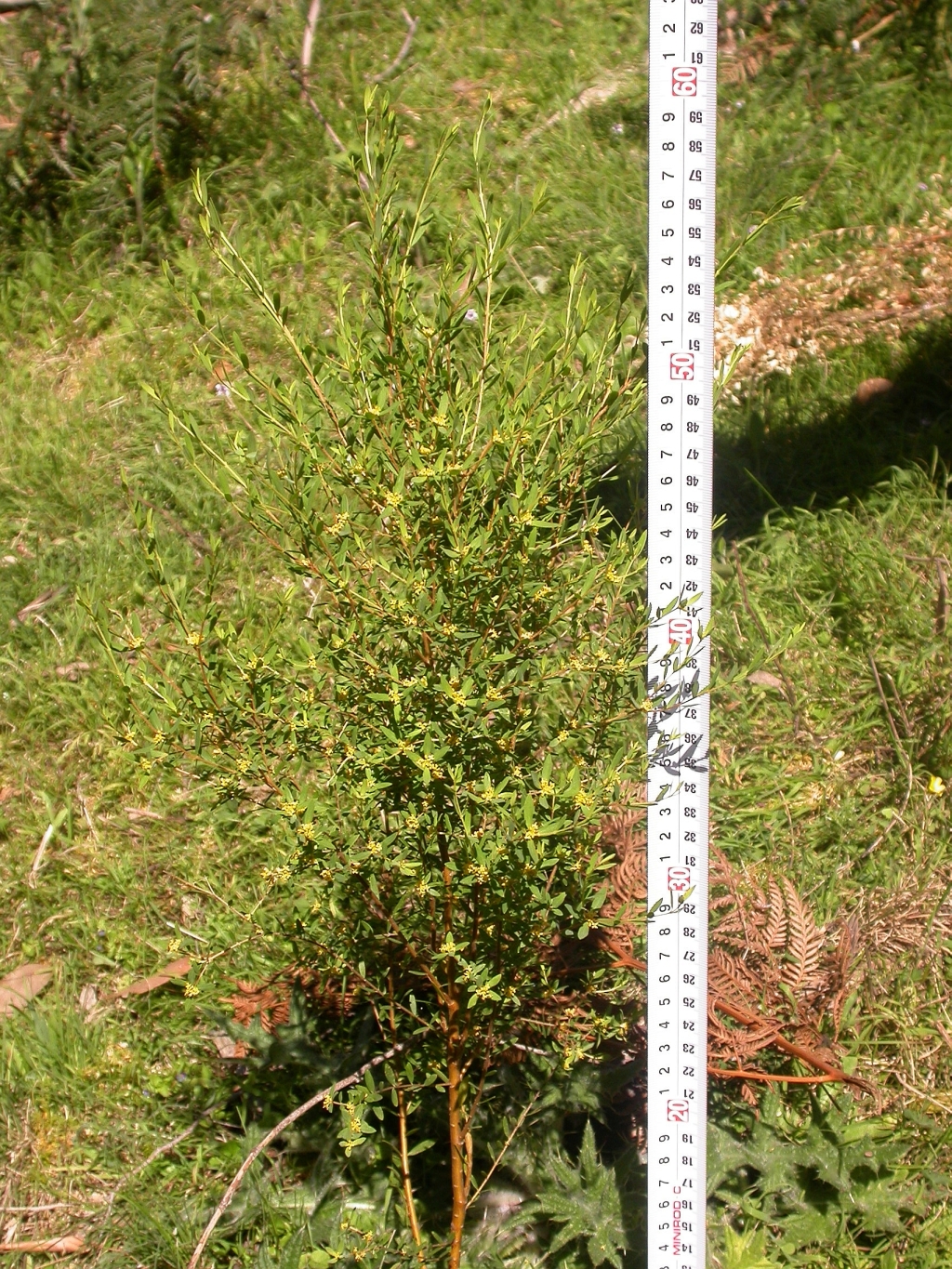Pimelea hewardiana
Meisn. Forked Rice-flowerShrub usually 40–70 cm high; young stems with short antrorse hairs. Leaves opposite, shortly petiolate, usually narrowly elliptic, smaller leaves sometimes broadly elliptic, 3–12 mm long, 1–3 mm wide, medium to dark green on upper surface, paler beneath, glabrous; margins sometimes recurved. Inflorescence terminal (often in fork between 2 branches), a compact head of 7–34 flowers; involucral bracts 4 or rarely 2, petiolate, similar in shape and colour to leaves, 5–11 mm long, 1–3 mm wide, larger than subtending leaves, glabrous. Flowers unisexual, yellow, hairy outside except at base, glabrous inside; floral tube c. 1–2.5 mm long, style-portion of female flowers shorter than ovary-portion; sepals c. 0.5–1.5 mm long, glabrous inside; pedicel hairy; stamens shorter than sepals; anthers opening laterally or somewhat laterally. Fruit dry, enclosed. Flowers mainly winter–spring.
MuM, Wim, GleP, Brid, VVP, GipP, OtP, CVU, GGr. Also SA. Grows in rocky habitats west of Melbourne.
Characterized by usually narrow-elliptic, glabrous leaves and the presence of axillary inflorescences with bracts similar in shape to the leaves.
Entwisle, T.J. (1996). Thymelaeaceae. In: Walsh, N.G.; Entwisle, T.J., Flora of Victoria Vol. 3, Dicotyledons Winteraceae to Myrtaceae, pp. 912–930. Inkata Press, Melbourne.
 Spinning
Spinning

